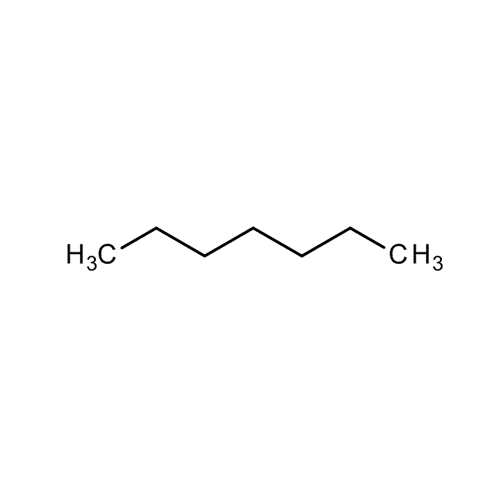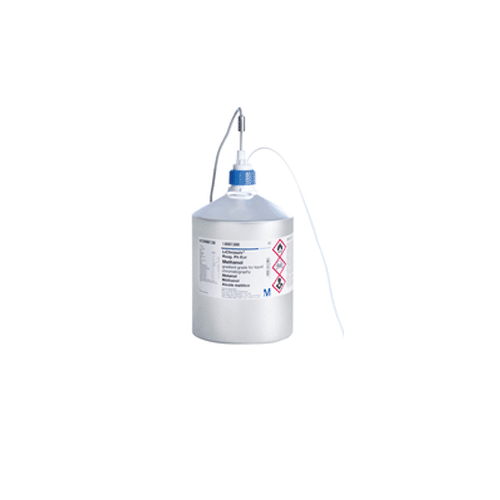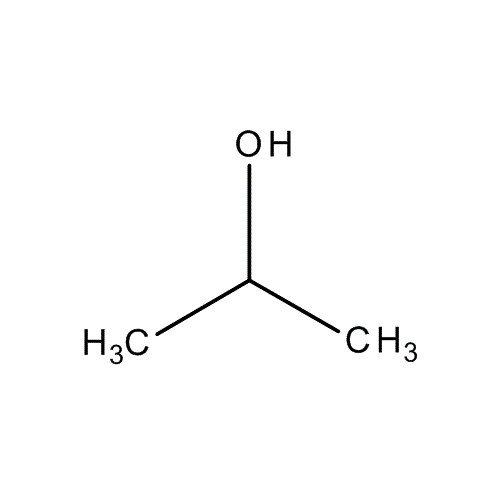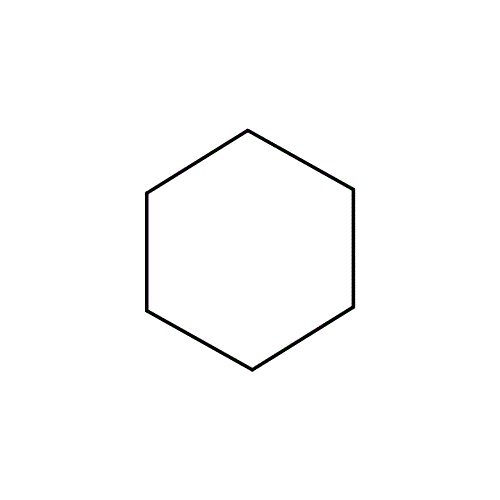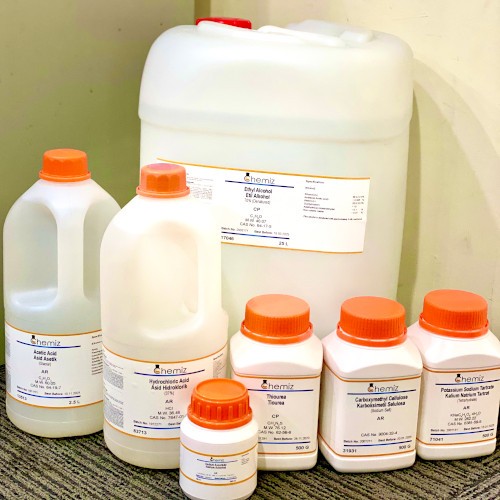
Alcohol 70%
Login to see pricesBrand:
Chemiz
Description
Synonyms: Ethyl-alcohol
Formula: C2H6O
Chemically pure grade ethanol (denatured) is used in general chemistry application. 70% denatured ethanol is used in most histology and cytology bioassays. It is also used as disinfectant in many lab applications.
Note:
AR: Analitycal Reagent Grade: Reagents for analytical purpose or research work that need high purity.
CP: Chemically Pure Grade: Reagents for regular practical in its original purity.
tert-Butyl methyl ether for liquid chromatography LiChrosolv®
Login to see pricesBrand:
Merck
Description
CAS number: 1634-04-4
Chemical Formula: (CH₃)₃COCH₃
Molar Mass: 88.15 g/mol
Synonyms: MTBE, MTB, 2-Methoxy-2-methylpropane, Methyl tert-butyl ether
With their high degree of UV transmittance, low particle count, low acidity and alkalinity and low evaporation residue level, LiChrosolv® solvents are ideal for reproducible separations. Since separations are normally carried out under gradient conditions in analytical HPLC, we offer solvents in “gradient grade” as well as “isocratic grade”. This enables to minimize the gradient effect of the solvent involved. Filtered by 0.2 µm filter
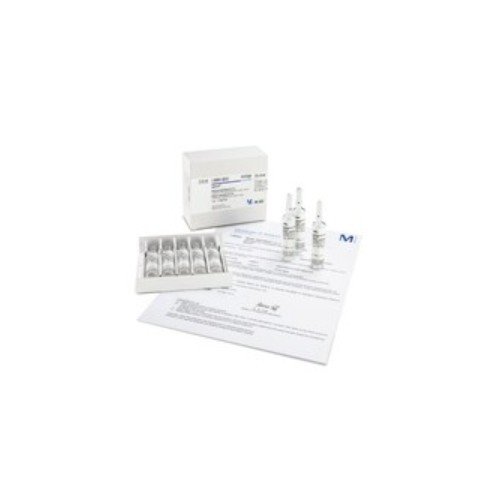
Water Standard Oil, CRM for Karl Fischer Titration (Merck)
Login to see pricesBrand:
Merck
CAS no.:
Chemical Formula: –
Molecular Weight: –
Synonym: Water Standard Oil Certified Reference Material for Karl Fischer Titration (oil matrix 15-30 ppm H2O) Aquastar®
Quality level: MQ300
Product specification and SDS for Water Standard Oil Certified Reference Material for Karl Fischer Titration (oil matrix 15-30 ppm H2O)
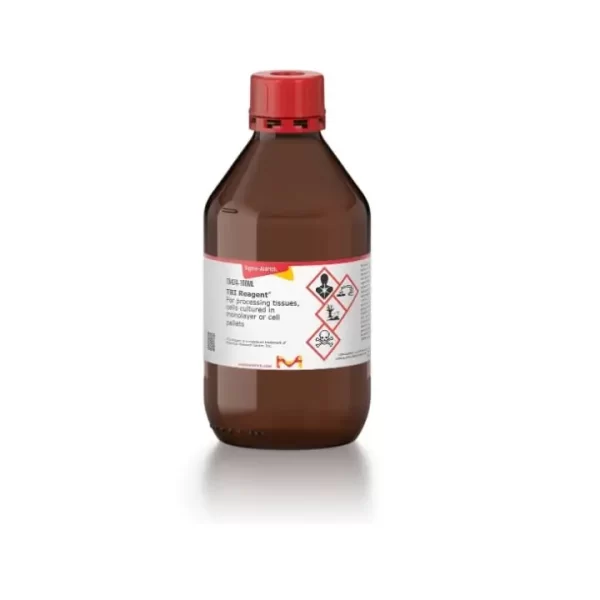
TRI Reagent® for processing tissues, cells cultured in monolayer or cell pellets (Sigma-Aldrich)
Login to see pricesBrand:
Sigma
Description:
Synonyms : DNA/RNA/protein extraction reagent, DNA/RNA/protein isolation reagent, DNA/RNA/protein purification reagent, TRI Reagent® cell pellet solution, cell pellet RNA extraction, cell pellet RNA isolation, cell pellet RNA purification, single step RNA extraction reagent, single step RNA isolation reagent, single step RNA purification reagent, total RNA extraction solution, total RNA isolation solution, total RNA purification solution, TRI Reagent® RNA Isolation Reagent.
TRI reagent® is a quick and convenient ready-to-use reagent useful for efficient total RNA extraction or for the simultaneous isolation of RNA, DNA and protein. TRI reagent® is a mixture of guanidine thiocyanate and phenol in a monophasic solution.
Homogenization or lysis of the tissue sample in TRI reagent® dissolves RNA, DNA and protein. The addition of chloroform or 1-bromo-3-chloropropane followed by centrifugation results in the separation of the mixture into three phases: an aqueous phase containing the RNA, the interphase containing DNA, and an organic phase containing proteins. Each of the components can then be isolated after separating the phases.
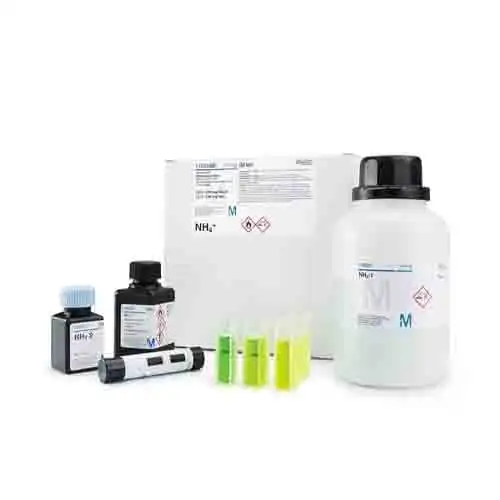
Cyanide Test, Merck
Login to see pricesBrand:
Merck
The method corresponds to DIN 38405-13 and is analogous to ISO 6703, EPA 335.2, APHA 4500-CN- E, and ASTM D2036-09 D.
This Spectroquant® Cyanide Reagent Test allows the accurate quantification of the free and readily liberated cyanide content in aqueous samples.
Method applied: Cyanide ions react with a chlorinating agent to form cyanogen chloride. In a follow-up reaction with 1,3-dimethylbarbituric acid in the presence of pyridine a violet dye (König reaction) is formed which is determined photometrically (only free cyanide. For readily liberated cyanide samples must be decomposed by digestion).
The Spectroquant® Reagent Test Kits contain highly stable, ready-to-use reagent mixtures to perform the analysis according to the procedure described in the accompanying instruction leaflet.
All our Cell and Reagent Test Kits are equipped with the unique Live ID which allows seamless method recognition and contains essential information such as lot number, expiry date, and automatic calibration updates.
n-Heptane for liquid chromatography LiChrosolv®
Login to see pricesBrand:
Merck
Description
CAS number: 142-82-5
Chemical Formula: CH₃(CH₂)₅CH₃
Molar Mass: 100.2 g/mol
Synonyms: n-Heptane
With their high degree of UV transmittance, low particle count, low acidity and alkalinity and low evaporation residue level, LiChrosolv® solvents are ideal for reproducible separations. Since separations are normally carried out under gradient conditions in analytical HPLC, we offer solvents in “gradient grade” as well as “isocratic grade”. This enables to minimize the gradient effect of the solvent involved. Filtered by 0.2 µm filter
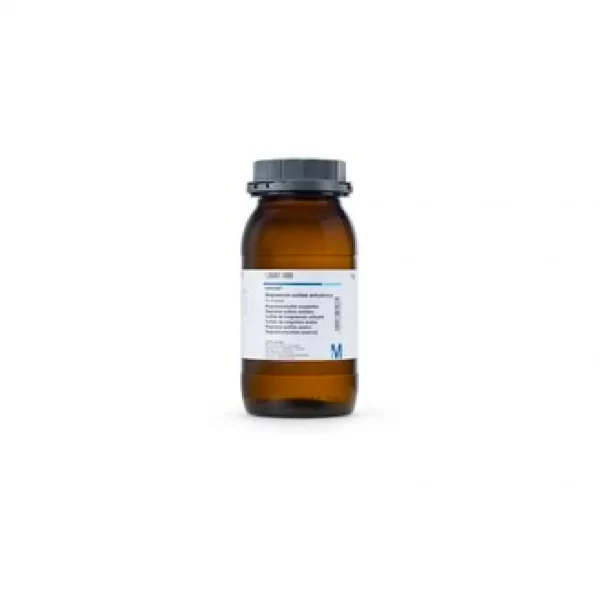
Magnesium Sulfate Anhydrous for Analysis EMSURE® (Merck)
Login to see pricesBrand:
Merck
Description
CAS number: 7487-88-9
Chemical Formula: MgSO₄
Molar Mass: 120.37 g/mol
Synonyms: –
EMSURE® is our premium line of inorganic reagents and solvents that are specifically designed to meet the needs of regulated analyses and demanding laboratory applications. Our products are of the highest quality and have a comprehensive range of specifications that provide you with precise control over test conditions and eliminate any uncertainties. Additionally, our EMSURE® reagents and solvents meet all international regulations, making them ideal for use in a wide variety of applications. If you want to ensure the utmost precision in your work, choose EMSURE®.
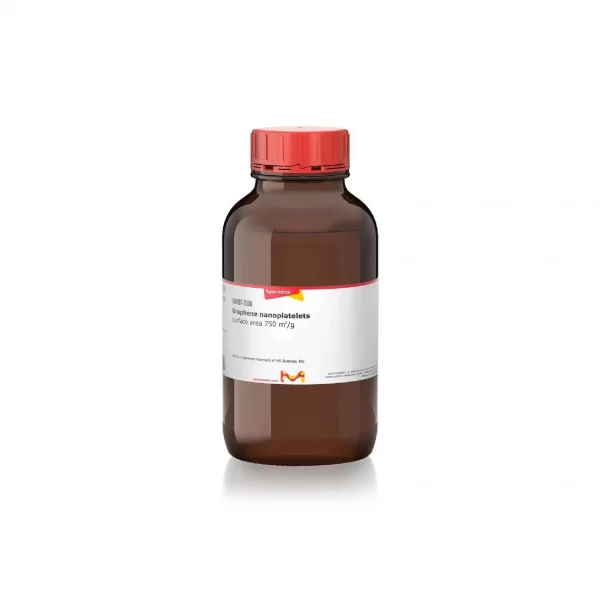
Graphene Nanoplatelets, Sigma – Aldrich
Login to see pricesBrand:
Sigma
Description
CAS number: 7782-42-5
Molecular weight:12.01
Synonyms: GNPs, xGnP® graphene nanoplatelets-grade C-750
xGnP® graphene nanoplatelets are a unique type of nanoparticle that have a platelet shape and are composed of short stacks of graphene sheets. Their distinctive size and morphology make them highly effective at providing barrier properties, as well as excellent electrical and thermal conductors due to their pure graphitic composition. Additionally, incorporating xGnP® graphene nanoplatelets can enhance mechanical properties such as stiffness, strength, and surface hardness of the matrix material.
Applications include:
- Ultracapacitor electrodes.
- Anode materials for lithium-ion batteries.
- Conductive additive for battery electrodes.
- Electrically conductive inks.
- Thermally conductive films and coatings.
- Additive for lightweight composites.
- Films or coatings for EMI shielding.
- Substrate for chemical and biochemical sensors.
- Barrier material for packaging.
- Additive for super-strong concrete.
- Additive for metal-matrix composites.
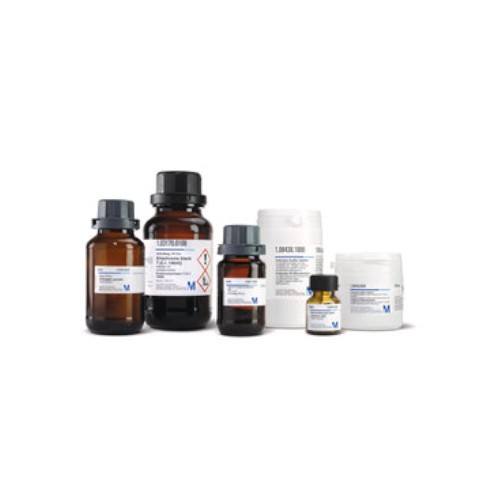
Trichloroacetic acid for Analysis EMSURE® ACS,Reag. Ph Eur (Merck)
Login to see pricesBrand:
Merck
Description
CAS number: 76-03-9
Chemical Formula: CCl₃COOH
Molar Mass: 163.38 g/mol
Product Specification and MSDS for Trichloroacetic acid (Merck).
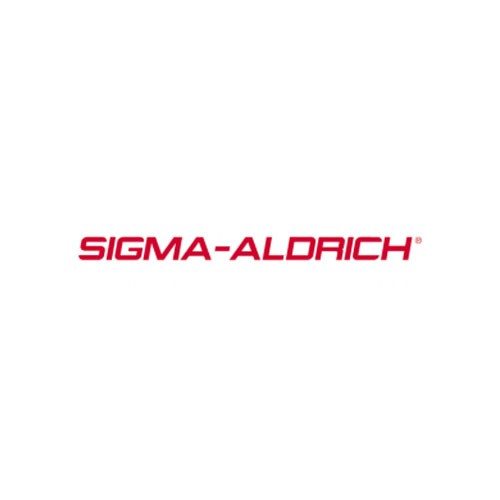
Polyvinylpyrrolidone, K90 (Sigma-Aldrich)
Login to see pricesBrand:
Sigma-Aldrich
Description
CAS number: 9003-39-8
Chemical Formula: (C6H9NO)n
Synonym: PVP, Polyvidone, Povidone
Application
Polyvinylpyrrolidone (PVP), also known as K90 is a water-soluble polymer with good bio-stability. It is chemically stable, has low toxicity and is biocompatible. Hence, it is useful in a variety of applications such as cosmetics, tissue engineering, and biomedical engineering.
Other Notes
Polyvinylpyrrolidone is a component of Denhardt′s Solution and is included at a concentration of 1% (w/v) in the standard 50X stock solution.
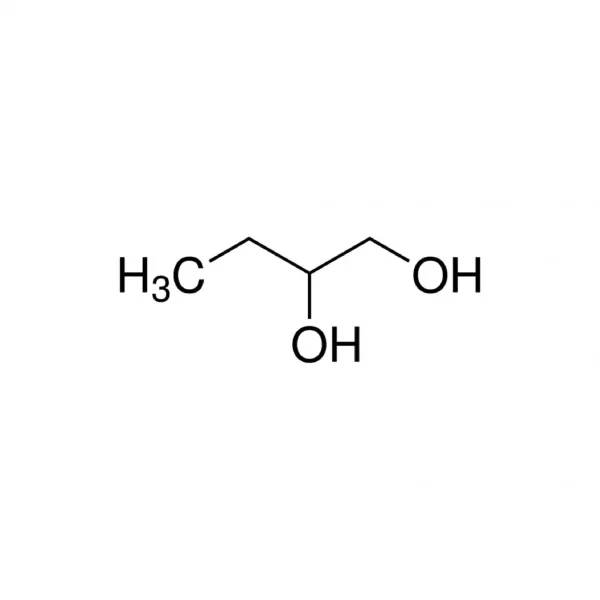
1,2-Butanediol purum, ≥98.0% (GC) (Sigma)
Login to see pricesBrand:
Sigma
Description
Grade: Purum
Assay: ≥98.0% (GC)
Synonym: 1,2-Butylene glycol
1,2-Butanediol has been used:
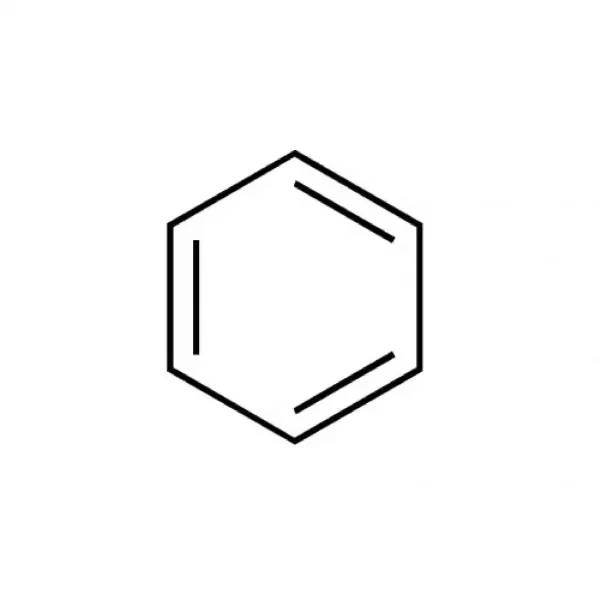
Benzene Anhydrous, 99.8% – Sigma-Aldrich
Login to see pricesBrand:
Sigma-Aldrich
Description
CAS Number: 71-43-2
Empirical Formula: C6H6
Molecular Weight: 78.11
Synonyms: –
Assay: 99.8%
Benzene is a six-membered aromatic compound that can undergo ionization induced by superhalogens, according to ab initio calculations. This compound is a frequently used industrial solvent but is also considered an air pollutant and a powerful carcinogen.
Benzene may be used in the formation of phenyl acetate by aerobic oxidation using Pd catalyst and acetic acid as solvent, formation of phenol by hydroxylation in the presence of mesoporous carbon nitride supported on vanadium catalyst and as a solvent to prepare nanoparticles of gallium nitride (GaN) by reacting Li3N and GaCl3 at 280°C.
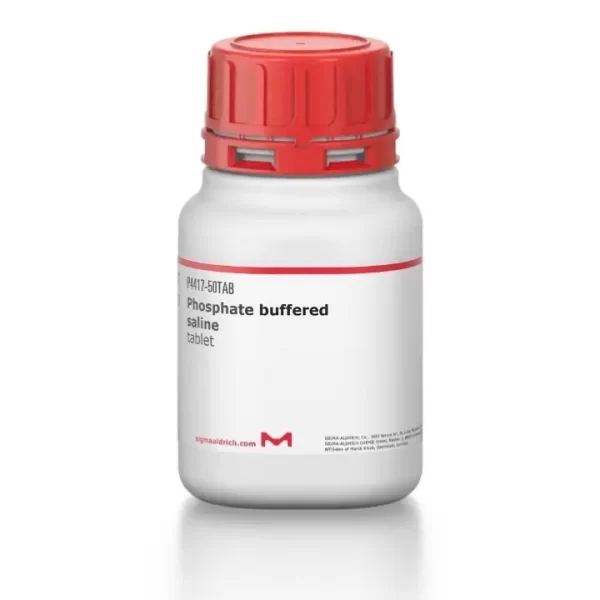
Phosphate buffered saline (Sigma-Aldrich)
Login to see pricesBrand:
Sigma
Description
CAS Number : 24867-26-3
Phosphate-buffered saline (PBS) is a buffer solution used in biological research. It is a water-based salt solution containing sodium phosphate, sodium chloride and, in some formulations, it contains potassium chloride and potassium phosphate. The osmolality and ion concentrations of the solutions match those of the human body (isotonic) and are non-toxic to most cells.
Application :
- For the production of platinum nanoparticles (NP-Pt) hydrocolloids
- For the washing of blood sample and SEM (scanning electron microscope) stubs prior to SEM
- For preparing the solution of fluorescent lectin wheat germ agglutinin (WGA)
- For the dilution of capture antibody during ELISA (enzyme linked immunosorbent assay)
- For suspension of cell pellets during centrifugation
- In immunoassay procedures.
One tablet dissolved in 200 mL of deionized water yields 0.01 M phosphate buffer, 0.0027 M potassium chloride and 0.137 M sodium chloride, pH 7.4, at 25 °C.
2-Propanol gradient grade for liquid chromatography LiChrosolv®
Login to see pricesBrand:
Merck
Description
CAS number: 67-63-0
Chemical Formula: CH₃CH(OH)CH₃
Molar Mass: 60.1 g/mol
Synonyms: Isopropyl alcohol, Isopropanol, iso-Propanol, IPA
With their high degree of UV transmittance, low particle count, low acidity and alkalinity and low evaporation residue level, LiChrosolv® solvents are ideal for reproducible separations. Since separations are normally carried out under gradient conditions in analytical HPLC, we offer solvents in “gradient grade” as well as “isocratic grade”. This enables to minimize the gradient effect of the solvent involved. Filtered by 0.2 µm filter

Cytochrome C from Bovine Heart (Sigma-Aldrich)
Login to see pricesBrand:
Sigma-Aldrich
Description
CAS number: 9007-43-6
Application
Cytochrome c has been identified as an important mediator in apoptotic pathways. The release of mitochondrial cytochrome c into the cytoplasm stimulates apoptosis and is commonly used as an indicator of the apoptotic process in the cell. Investigation on the effect of Paris Saponin I (PS I) on human gastric carcinoma cell growth (SGC7901 cells) have shown an elevated level cytoplasmic cytochrome c. Results are inhibition of proliferation in SGC7901 cells by inducing mitochondria-dependent apoptosis through cytochrome c.
Biochem/physiol Actions
The ready interconversion of cytochrome c between ferrous and ferric states makes it an efficient biological electron carrier. It plays a vital role in cellular oxidations in both plants and animals. Generally regarded as a universal link in the respiratory chain, it forms the essential electron-bridge between the respirable substrates and oxygen.

N,N-Dimethylacetamide, ReagentPlus®, 99% (Sigma-Aldrich)
Login to see pricesBrand:
Sigma-Aldrich
General Description
CAS number: 127-19-5
Chemical Formula: CH3CON(CH3)2
Molar Mass: 87.12 g/mol

TLC Silica gel 60 F₂₅₄, (20×20 cm) – Merck
Login to see pricesBrand:
Merck
Description
For thin-layer chromatography applications, we offer Aluminum TLC plates that are coated with silica gel containing a fluorescent indicator F254. These silica gel TLC plates are available in a set of 25 and measure 20x20cm. Our classical silica TLC plates are created by combining our established silica gel 60 with a unique polymeric binder. This combination produces a very adherent and robust surface that will not crack or blister and can even withstand writing with a pencil without risking damage to the layer.

TLC Silica gel 60 F₂₅₄ (5×10 cm) Merck
Login to see pricesBrand:
Merck
Description
For thin-layer chromatography applications, we offer Aluminum TLC plates that are coated with silica gel containing a fluorescent indicator F254. These silica gel TLC plates are available in a set of 50 and measure 5×10 cm. Our classical silica TLC plates are created by combining our established silica gel 60 with a unique polymeric binder. This combination produces a very adherent and robust surface that will not crack or blister and can even withstand writing with a pencil without risking damage to the layer.

2,4,6-Tris(2-pyridyl)-s-triazine, For Spectrophotometric Det. of Fe (Sigma-Aldrich)
Login to see pricesBrand:
Sigma-Aldrich
Description:
CAS number: 3682-35-7
Chemical Formula: C18H12N6
Molar Mass: 312.33 g/mol
Synonyms: 2,4,6-Tri(2-pyridyl)-s-triazine, TPTZ
General description
2,4,6-Tris(2-pyridyl)-s-triazine is a Case and Koft compound generally used in the determination of iron in a colourimetric analysis. This reagent is for the spectrophotometric determination of Fe(II) and of total Fe.
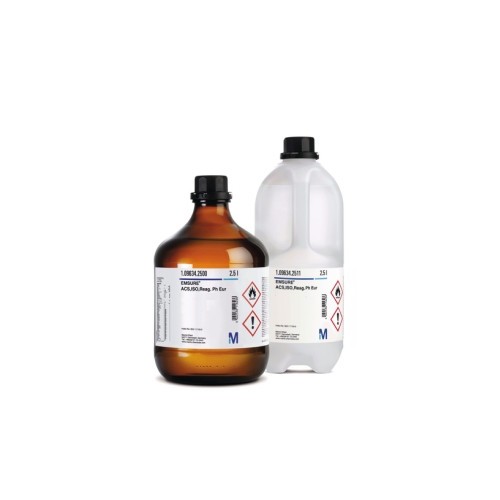
Absolute Ethanol for Analysis EMSURE® ACS,ISO,Reag. Ph Eur (Merck)
Login to see pricesBrand:
Merck
Description
CAS Number: 64-17-5
Chemical Formula: C₂H₅OH
Molecular Weight: 46.07 g/mol
Synonyms: Ethyl alcohol, EtOH
Quality Level: MQ300
EMSURE® grade solvents are suitable for a broad spectrum of classical lab applications, and are frequently used in regulated and highly demanding lab applications. EMSURE® provides worldwide best and most extensive product specifications. We declare our EMSURE® range to be in compliance with the ACS, with the reagent part of the European Pharmacopoeia (Reag. Ph Eur) and also with the ISO standards.
Product Specification and MSDS for absolute ethanol (Merck).

Benzyltriethylammonium Chloride, 99% (Sigma-Aldrich)
Login to see pricesBrand:
Sigma-Aldrich
General description
These durable TrueNorth® Cool Container with Lid are for chilling temperature-sensitive samples. They have heavy insulation properties for the ultracold and are ideal for ice as well as ice-salt slurries.
Features and Benefits
• made from single-moulded polyurethane
• close-fit lid keeps evaporation to a minimum and features a comfortable recessed knob
• lid nests under the bucket to save space
• for low-temperature use to -196ºC at 1 bar
• stackable
• pour spout and large handles

Ethanol denatured with about 1% methyl ethyl ketone for analysis EMSURE® (Merck)
Login to see pricesBrand:
Merck
Description
CAS number: 64-17-5
Chemical Formula: C₂H₅OH
Molar Mass: 46.07 g/mol
Synonyms: Ethyl alcohol, EtOH
EMSURE® grade solvents are suitable for a broad spectrum of classical lab applications and are frequently used in regulated and highly demanding lab applications. EMSURE® provides worldwide best and most extensive product specifications. We declare our EMSURE® range to be in compliance with the ACS, with the reagent part of the European Pharmacopoeia (Reag. Ph Eur) and also with the ISO standards.
Cyclohexane for liquid chromatography LiChrosolv®
Login to see pricesBrand:
Merck
Description
CAS number: 110-82-7
Chemical Formula: C₆H₁₂
Molar Mass: 84.16 g/mol
Synonyms: Hexahydrobenzene, Hexamethylene, Naphthene
With their high degree of UV transmittance, low particle count, low acidity and alkalinity and low evaporation residue level, LiChrosolv® solvents are ideal for reproducible separations. Since separations are normally carried out under gradient conditions in analytical HPLC, we offer solvents in “gradient grade” as well as “isocratic grade”. This enables to minimize the gradient effect of the solvent involved. Filtered by 0.2 µm filter

Methanol for Liquid Chromatography LiChrosolv® (Merck)
Login to see pricesBrand:
Merck
Description
CAS Number: 67-56-1
Chemical Formula: CH₃OH
Molecular Weight: 32.04 g/mol
Synonyms: MeOH, Hydroxymethane, Methyl alcohol, Carbinol
Quality Level: MQ100
With their high degree of UV transmittance, low particle count, low acidity and alkalinity and low evaporation residue level, LiChrosolv® solvents are ideal for reproducible separations. Since separations are normally carried out under gradient conditions in analytical HPLC, we offer solvents in “gradient grade” as well as “isocratic grade”. This enables to minimize the gradient effect of the solvent involved.
Product Specification and MSDS for Methanol, LiChrosolv® (Merck).



